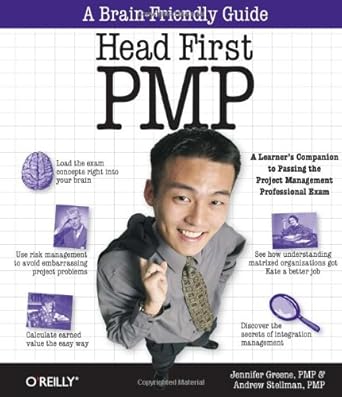Introduction
In today’s competitive business and manufacturing environment, organizations must make informed decisions to optimize efficiency, enhance product quality, and improve customer satisfaction. One of the most effective decision-making tools used in product development, process improvement, and operational strategies is the Pugh Decision Matrix.
The Pugh Decision Matrix, also known as the Decision Matrix Method or Pugh Concept Selection, is a comparative analysis tool used to evaluate different alternatives against a reference option (also known as the baseline or datum). It is designed to help decision-makers rank choices based on multiple criteria, reducing bias and improving clarity.One of the most effective tools to facilitate structured decision-making is the Pugh Matrix, also known as the Decision Matrix or Selection Matrix.

Developed by Dr. Stuart Pugh, this matrix provides a structured approach to evaluating multiple options against a set of predefined criteria. It is widely used in Six Sigma and Lean Manufacturing methodologies, helping organizations make data-driven, objective choices.
When to Use the Pugh Matrix?
The Pugh Matrix is particularly useful in the following scenarios:
- Evaluating quality management initiatives.
- Selecting the best product design from multiple alternatives.
- Selecting the best product design from multiple alternatives.
- Process improvement in manufacturing.
- Choosing the most effective business strategy.
- Supplier selection in procurement.
- Evaluating quality management initiatives.
Before the Pugh Matrix, decision-making often relied on unstructured methods such as brainstorming, intuition, or simple pros-and-cons lists. These methods lacked objectivity and failed to consider multiple criteria simultaneously. Pugh sought to create a systematic approach that would:
- Reduce decision-making bias.
- Enable structured comparisons.
- Simplify complex evaluations.
- Enhance collaboration among teams.
The Pugh Matrix quickly gained traction across various industries, particularly in product development, engineering, project management, and quality assurance. It became a cornerstone tool in methodologies such as Six Sigma and Lean Manufacturing, where optimizing processes and selecting the best alternatives is crucial. Overall, the Pugh Matrix is a useful tool for decision-making that helps evaluate alternatives based on multiple criteria, weight them according to their importance, and arrive at a rational and informed decision.
| Decision Tool | Key Features | How It Differs from Pugh Matrix |
| SWOT Analysis | Evaluates Strengths, Weaknesses, Opportunities, and Threats | SWOT is more qualitative, while the Pugh Matrix assigns scores for comparison. |
| Weighted Scoring Model | Assigns different weights to criteria for evaluation | The Pugh Matrix uses a baseline comparison rather than weighted scores. |
| Analytic Hierarchy Process (AHP) | Breaks decisions into a hierarchy of criteria and sub-criteria | AHP is more complex and requires mathematical calculations. |
| Decision Trees | Uses a graphical representation of choices and outcomes | Decision trees are better for sequential decision-making, while Pugh Matrix is for direct comparisons. |
| Cost-Benefit Analysis (CBA) | Compares alternatives based on financial impact | The Pugh Matrix considers both qualitative and quantitative factors beyond just cost. |
Here are the steps to use a Pugh Matrix:
- Identify the criteria: First, identify the criteria that will be used to evaluate the alternatives. Criteria should be specific, measurable, and relevant to the decision being made.
- Assign weights: Assign weights to each criterion based on its importance. This will help to ensure that the evaluation is weighted towards the most important criteria.
- Establish a baseline: Establish a baseline alternative, which is usually the current option or the default option. This alternative will be compared to the other options.
- Evaluate alternatives: Evaluate each alternative against each criterion using a scoring system. The scoring system could be a scale of 0 to 5 or -2 to +2, where 0 or neutral is the baseline score.
- Multiply scores by weights: Multiply each score by the weight of the corresponding criterion to obtain a weighted score for each alternative.
- Determine the total score: Add up the weighted scores for each alternative to determine the total score.
- Compare and select the best option: Compare the total scores of each alternative and select the option with the highest score as the best option.
Click here to Buy from Amazon
Connection with Six Sigma and Lean Manufacturing
Six Sigma and the Pugh Matrix
Six Sigma is a data-driven methodology focused on process improvement by minimizing defects and variability. The Pugh Matrix is widely used in DMAIC (Define, Measure, Analyze, Improve, Control) phases of Six Sigma:
- Define – Identifies key requirements for decision-making
- Measure – Assigns evaluation criteria based on data
- Analyze – Compares options using structured scoring
- Improve – Selects the best solution to enhance performance
- Control – Implements and monitors the selected alternative
By integrating the Pugh Matrix in Six Sigma projects, organizations can systematically compare solutions before finalizing a process improvement strategy.
Lean Manufacturing and the Pugh Matrix
Lean Manufacturing focuses on eliminating waste and increasing value to the customer. The Pugh Matrix assists Lean teams in:
- Selecting the most efficient process improvements
- Reducing waste and inefficiencies in production
- Enhancing product design to align with Lean principles
- Prioritizing key Lean initiatives for implementation
By comparing different alternatives against a set of Lean performance metrics, businesses can identify the most impactful changes while ensuring resource efficiency.
Here’s an example of how to use the Pugh Matrix:
Let’s say that a company is considering three different office locations for their new branch. They want to choose the location that will be the most convenient for their employees and customers. They have come up with five criteria to evaluate each location:
- Proximity to public transportation
- Availability of parking
- Accessibility for people with disabilities
- Surrounding amenities (restaurants, shops, etc.)
- Cost of rent
They assign a weight to each criterion based on their importance:
- Proximity to public transportation – weight: 4
- Availability of parking – weight: 3
- Accessibility for people with disabilities – weight: 2
- Surrounding amenities – weight: 3
- Cost of rent – weight: 5
Next, they evaluate each location based on these criteria, rating each on a scale of -2 to +2 (with 0 being neutral):
Option 1:
- Proximity to public transportation: +2
- Availability of parking: 0
- Accessibility for people with disabilities: +1
- Surrounding amenities: +2
- Cost of rent: -2
Option 2:
- Proximity to public transportation: -1
- Availability of parking: +2
- Accessibility for people with disabilities: +2
- Surrounding amenities: +1
- Cost of rent: +1
Option 3:
- Proximity to public transportation: +1
- Availability of parking: -2
- Accessibility for people with disabilities: -1
- Surrounding amenities: +2
- Cost of rent: 0
Click here to Buy from Amazon
After calculating the weighted scores for each criterion and option, the Pugh Matrix looks like this:

From this matrix, we can see that Option 2 has the highest total score, making it the best choice for the company’s new branch location.
Real-World Applications of the Pugh Matrix
Product Development
Tech companies use the Pugh Matrix to compare different product designs based on factors such as cost, user experience, and manufacturing feasibility.
Supplier Selection
Procurement teams evaluate multiple vendors based on pricing, quality, and reliability.
Software Selection
Organizations use the Pugh Matrix to select project management or CRM software based on integration, usability, and scalability.
Process Improvement
Manufacturing firms leverage the matrix to decide between Lean, Six Sigma, and automation strategies.
Common Pitfalls and How to Avoid Them
Subjectivity in Scoring
- Solution: Establish clear evaluation criteria and use numerical scores when possible.
Overlooking Key Criteria
- Solution: Ensure all stakeholders contribute to defining evaluation factors.
Complexity with Large Datasets
- Solution: Limit the number of alternatives to a manageable set or use digital tools.
Advantages of the Pugh Matrix
- Structured and Objective Decision-Making
- Eliminates Bias by Comparing Against a Baseline
- Easy to Understand and Use
- Encourages Team Collaboration
- Flexible Across Various Industries and Use Cases
Disadvantages of the Pugh Matrix
- Subjectivity in Assigning Scores
- Over-Simplification of Complex Decisions
- Heavily Dependent on the Quality of Chosen Criteria
- Does Not Account for Weighting of Criteria Unless Modified
Conclusion
The Pugh Decision Matrix is a powerful decision-making tool used in Six Sigma, Lean Manufacturing, and various industries. It offers a structured, objective, and data-driven approach to selecting the best alternative.
By following a step-by-step approach, businesses can eliminate bias, enhance efficiency, and make informed strategic choices. Despite some limitations, it remains an essential tool for structured decision-making, ensuring improved quality and performance across different domains.
Whether you’re a project manager, engineer, or business leader, mastering the Pugh Matrix can significantly enhance your ability to make smart, data-driven decisions!
As AI and data analytics evolve, the future of decision matrices will become even more sophisticated, ensuring better accuracy and efficiency. By integrating best practices and staying updated on technological advancements, organizations can leverage the Pugh Matrix to drive meaningful, data-driven decisions.
I hope this blog helped in understanding the basic concept in a simplified manner, watch out for more such stuff in the future.
📢📢 𝑺𝒐𝒄𝒊𝒂𝒍 𝑴𝒆𝒅𝒊𝒂 𝑳𝒊𝒏𝒌:
Thanks!!!
For questions please leave them in the comment box below and I’ll do my best to get back to those in a timely fashion. And remember to subscribe to Digital eLearning YouTube channel to have our latest videos sent to you while you sleep.
✍️ 𝓓𝓲𝓼𝓬𝓵𝓪𝓲𝓶𝓮𝓻: Copyright Disclaimer under section 107 of the Copyright Act of 1976, allowance is made for “fair use” for purposes such as criticism, comment, news reporting, teaching, scholarship, education and research. Fair use is a use permitted by copyright statute that might otherwise be infringing. The information contained in this video is just for educational and informational purposes only and does not have any intention to mislead or violate Google and YouTube community guidelines or policy. I respect and follow all terms & conditions of Google & YouTube.







